Harnessing the power of generative AI in telecom with Elastic Stack

In the dynamic landscape of telecommunications, the integration of the Elastic® Stack and generative AI is ushering in a new era of operational efficiency and innovation. These technologies are not just augmenting network operations but are also revolutionizing internal processes across various departments. Below, we’ll delve into their impact on different facets of telecom operations.
Radio, RAN, and transport networks: The new era of network management
In the telecom sector, particularly within radio, RAN, and core network operations, the adoption of the Elastic Stack has been a game changer, laying the groundwork for significant technological advancements. The Elastic Stack excels in aggregating and analyzing extensive data sets, offering profound insights into network performance and enabling proactive management. This capability is crucial for telecom operators to swiftly pinpoint and address potential issues, ensuring consistent service quality and high customer satisfaction.
The integration of generative AI with the Elastic Stack has taken network management to a new level of efficiency and intelligence. By automating complex decision-making processes, AI empowers telecom operators with predictive maintenance capabilities and the ability to make real-time network adjustments. This not only boosts network reliability but also minimizes operational downtime, a key factor in maintaining service excellence.
The synergy between the Elastic Stack and generative AI represents more than a contemporary solution; it's a foundation for future technological developments in the telecom industry. It underscores the transformative impact of data-driven insights and AI integration in reshaping the network operations landscape.
Example: Elastic AI Assistant for telecom
Let's explore example usage of Elastic’s AI Assistant in the telecommunication space.
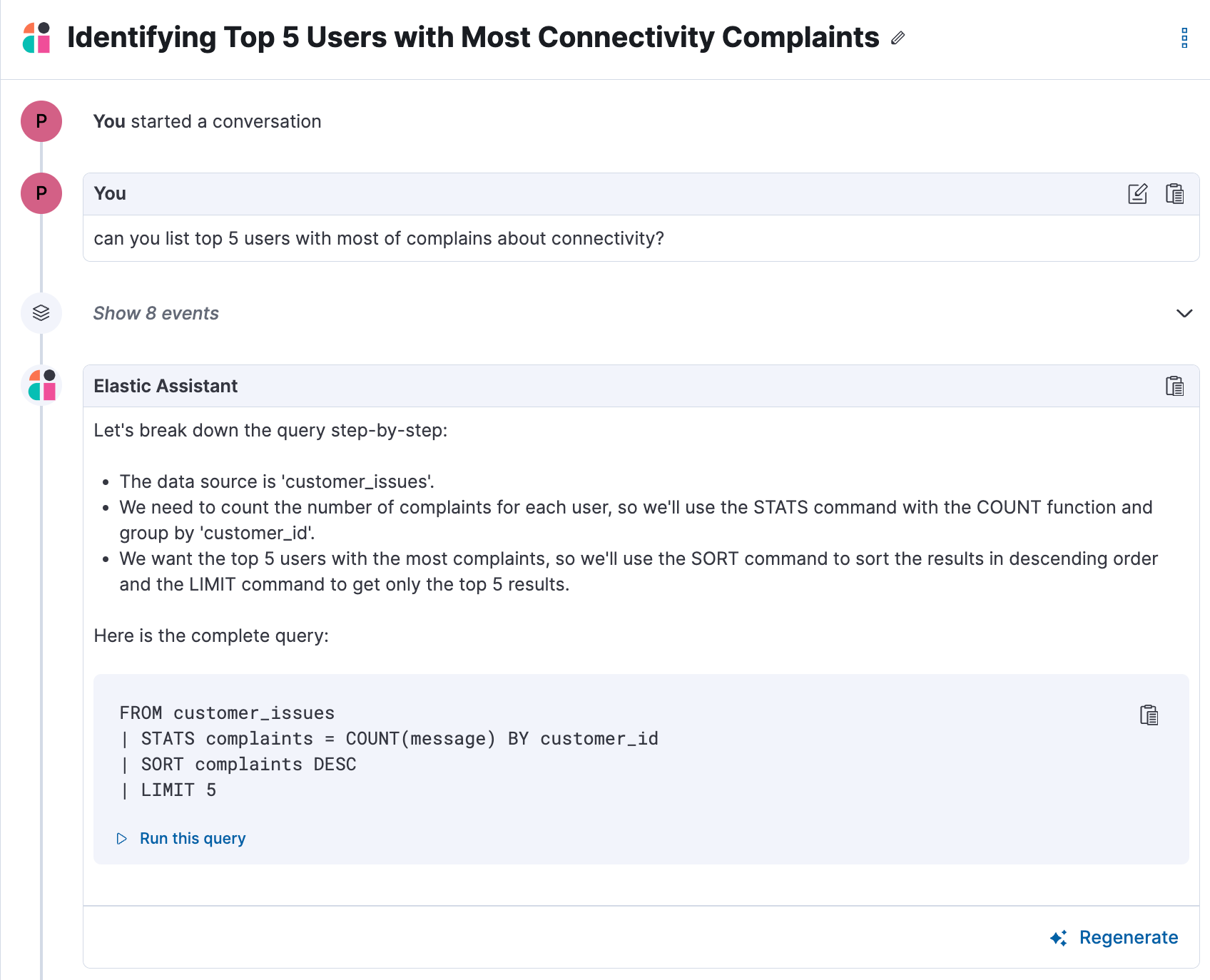
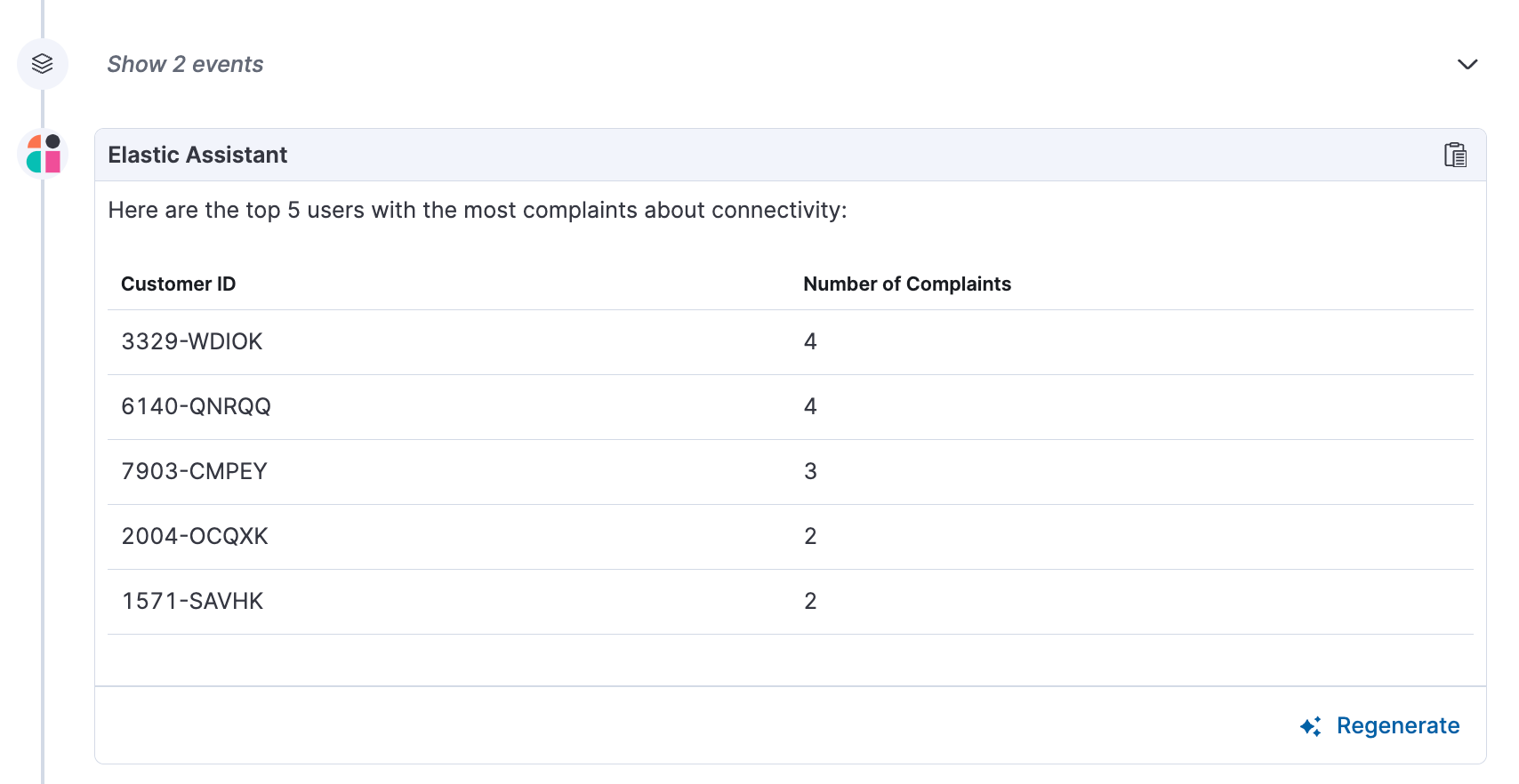
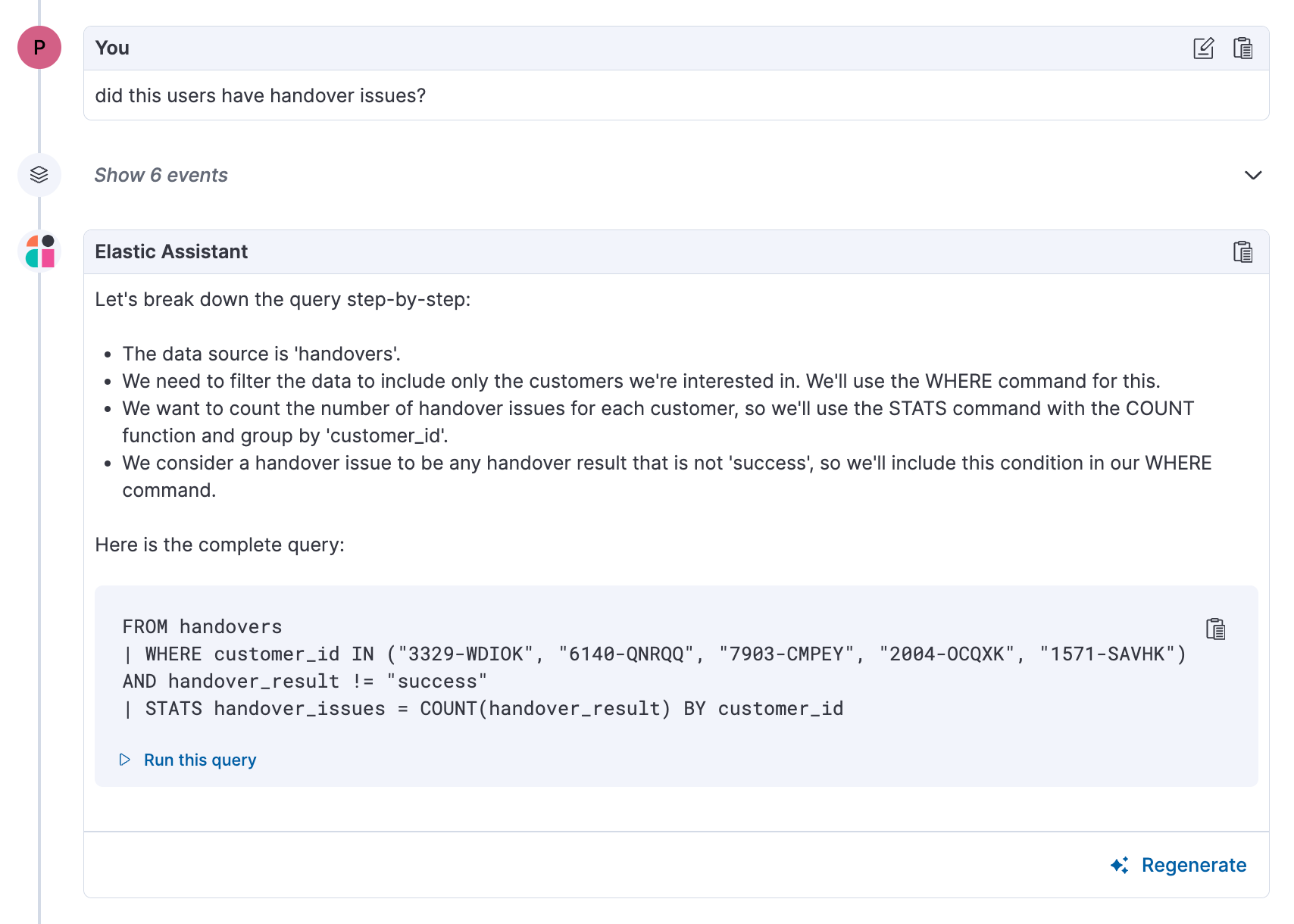
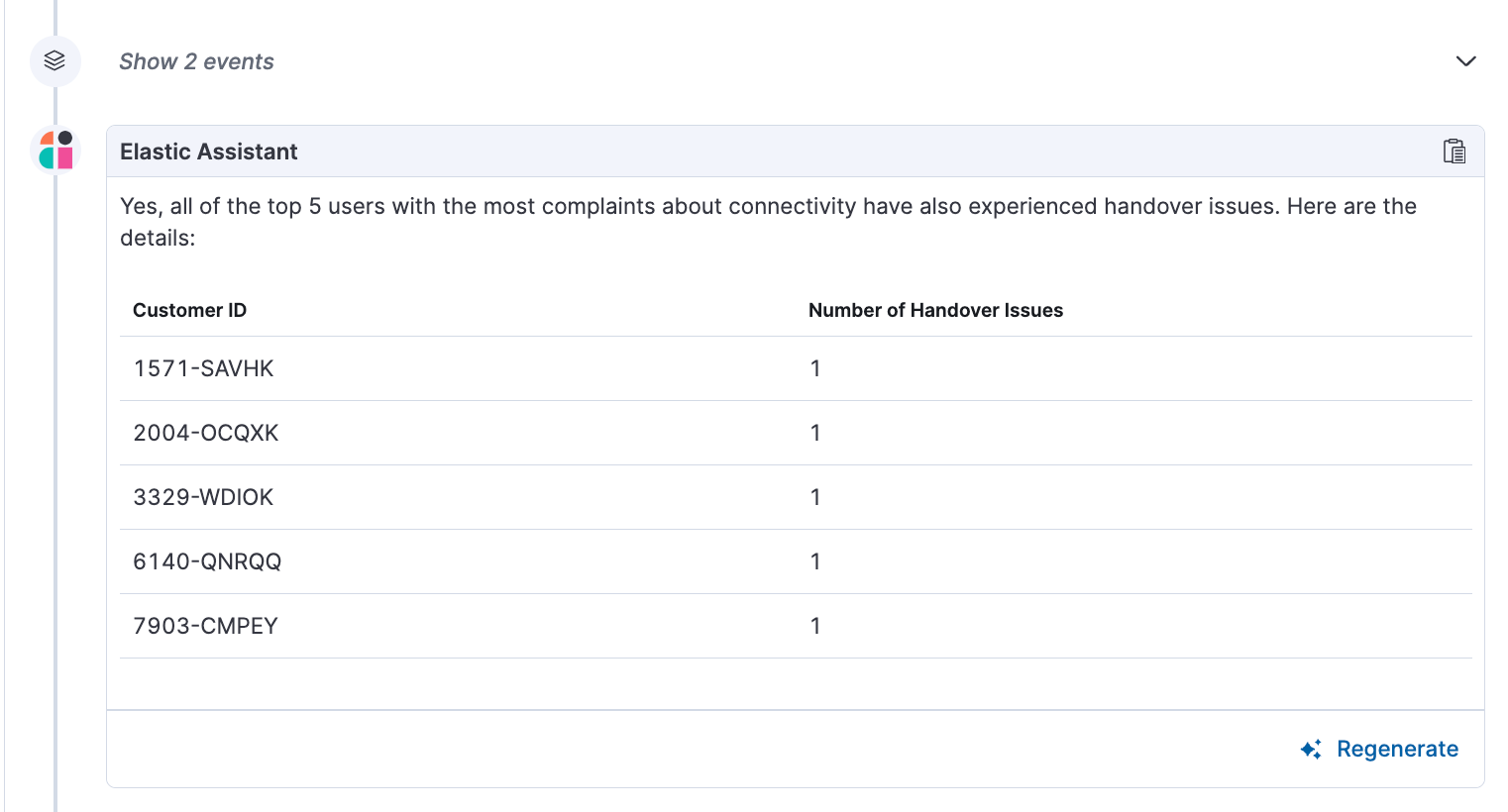
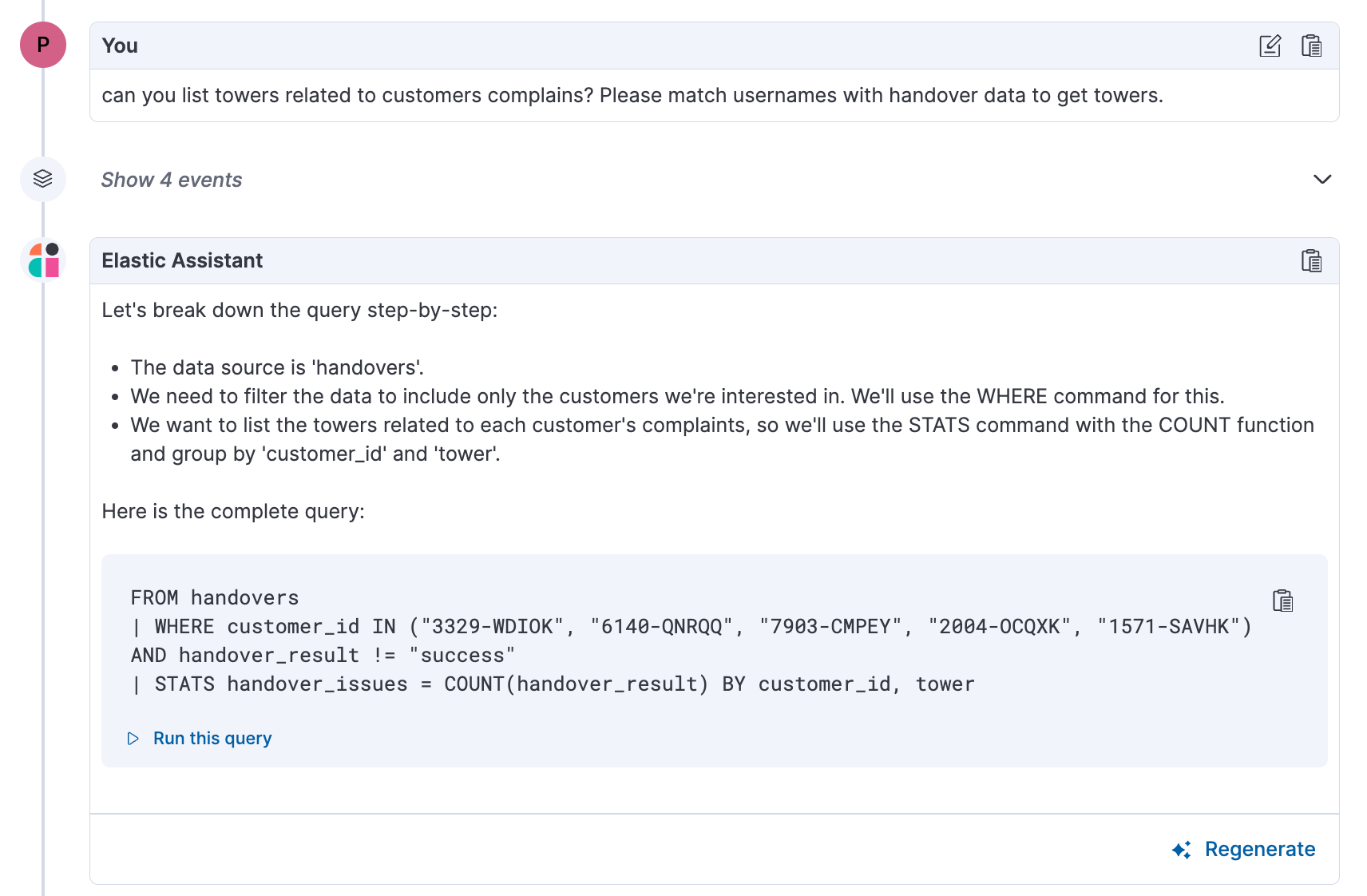
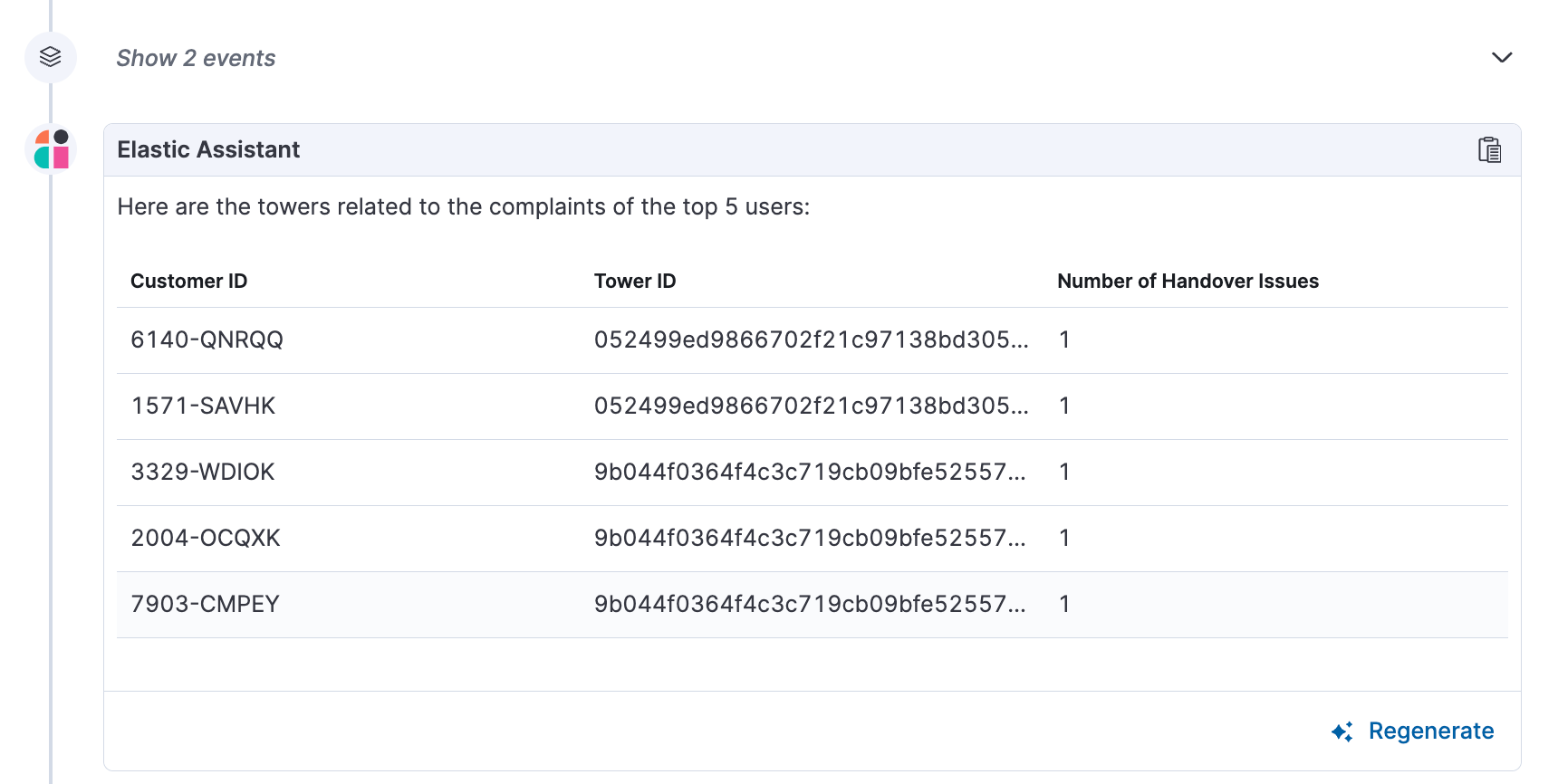
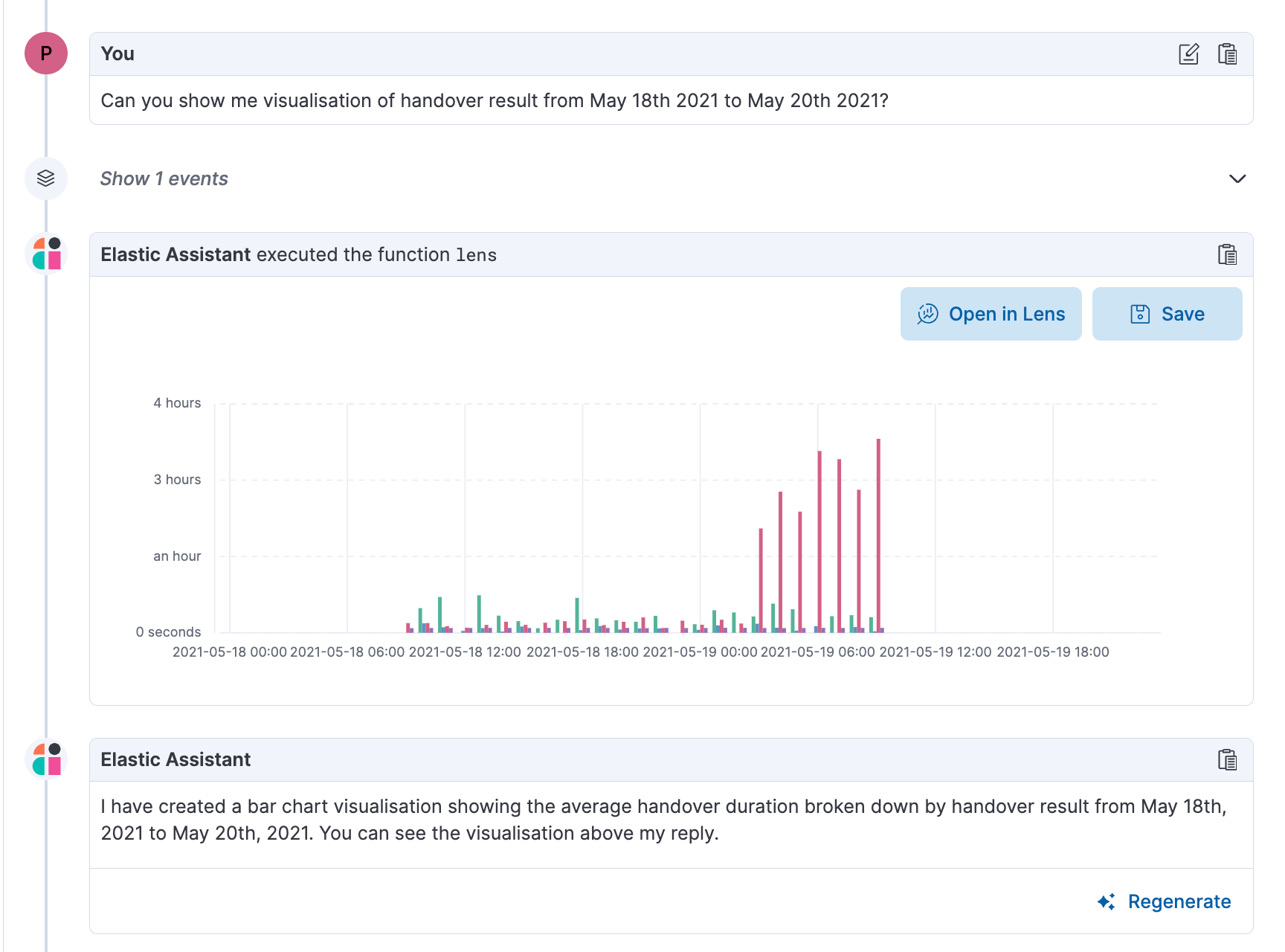
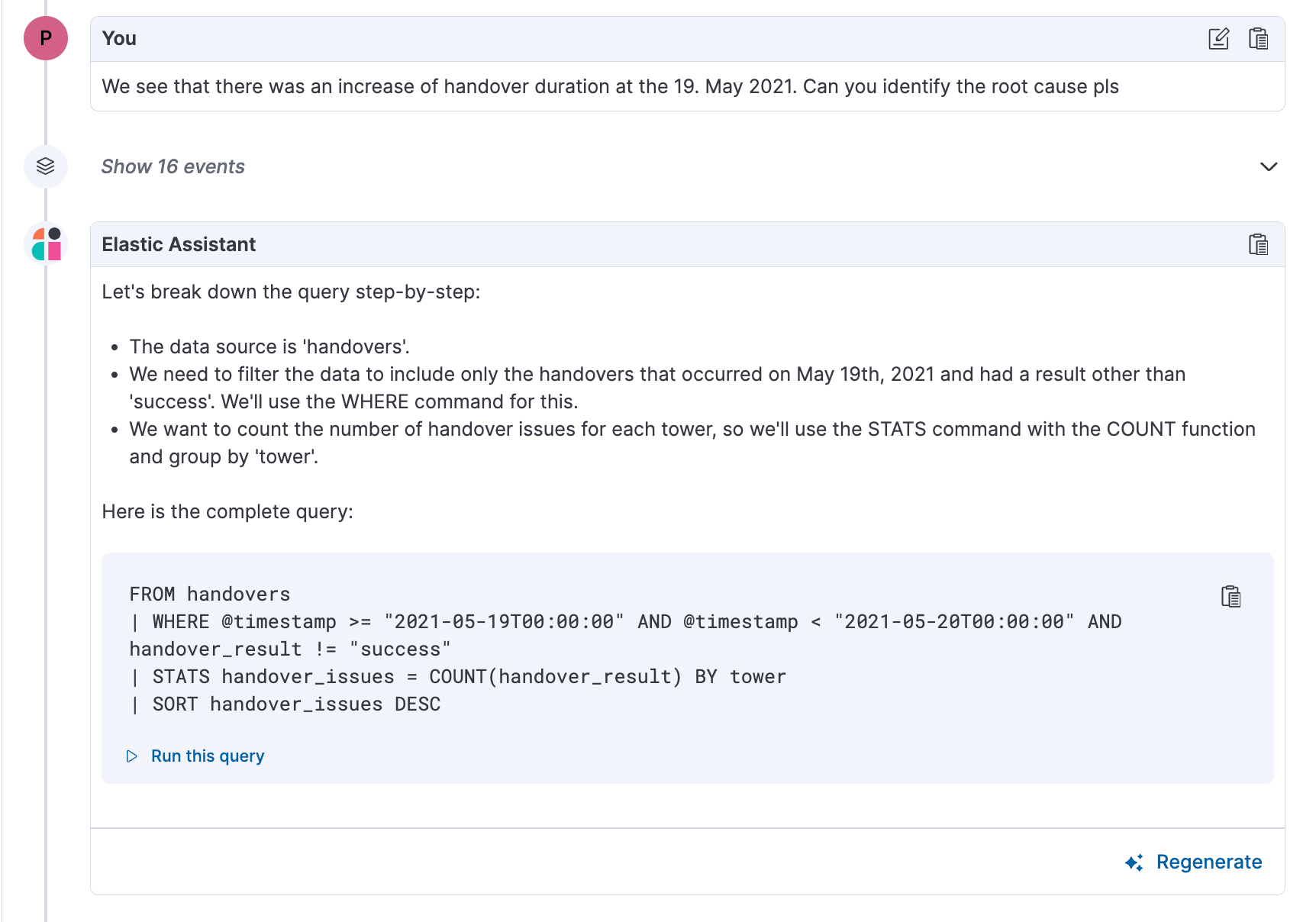

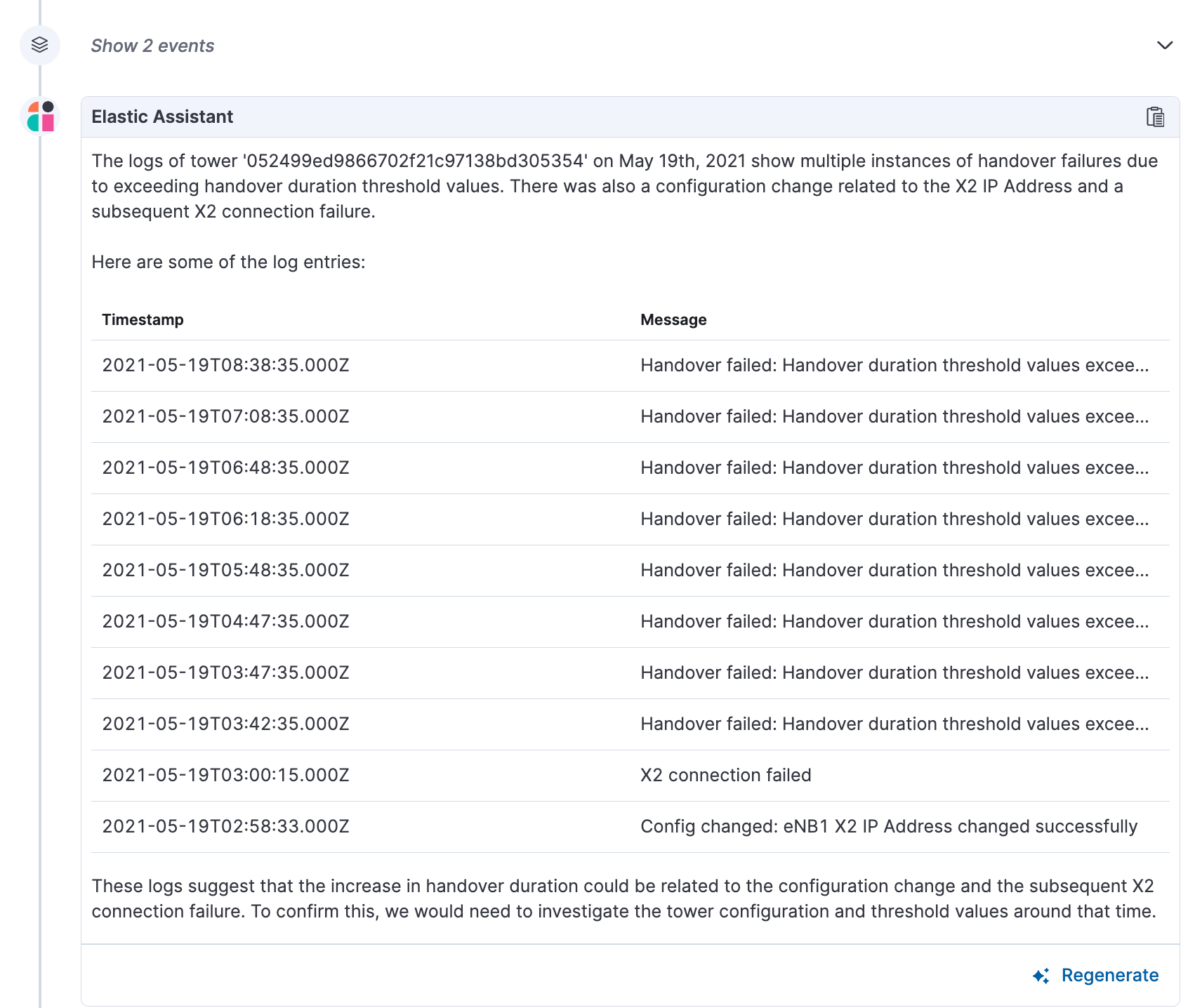
Operational efficiency and customer support: Transforming customer interactions and internal processes
Generative AI, in partnership with the Elastic Stack's advanced search capabilities, is set to transform the landscape of customer interactions and internal operations in a profound way. This combination offers the potential for highly personalized, efficient, and swift resolutions — a shift that significantly impacts areas such as HR, IT Helpdesk, and Procurement.
At the heart of this transformation is the Elastic Observability AI Assistant, an intuitive and intelligent tool that leverages the full spectrum of an organization's data. By having comprehensive access to this data, the AI Assistant is not just a tool for retrieving information; it becomes a central hub for understanding and responding to the specific needs of each user.
Imagine an HR query regarding policy updates or leave balances being addressed with the same personalized attention as a complex IT troubleshooting request. The AI Assistant, equipped with the depth and breadth of organizational data, can tailor its responses to each individual query, factoring in the user's history, preferences, and specific circumstances. This level of customization ensures that the responses are not only accurate but also relevant to each unique scenario.
Furthermore, in Procurement or IT Helpdesk scenarios, where time and precision are of the essence, the AI Assistant can quickly parse through vast data sets to provide solutions or suggestions. This rapid response capability is critical in maintaining operational efficiency and ensuring user satisfaction.
By integrating generative AI with the Elastic Stack's search technology, organizations can create a responsive, intelligent system that not only understands the context of queries but also learns and adapts to the evolving needs of its users. This AI-driven approach represents a significant leap forward in how organizations interact with their data, transforming it into a dynamic resource for personalized, informed decision-making and problem-solving.
This integration heralds a new era where data is not just a static asset but a dynamic, interactive tool that enhances every aspect of organizational operations, from customer service to internal management processes.
Example: Elastic AI Assistant for HR, Procurement, and IT Helpdesk
Let’s see how theAI Assistant works in these example interactions:
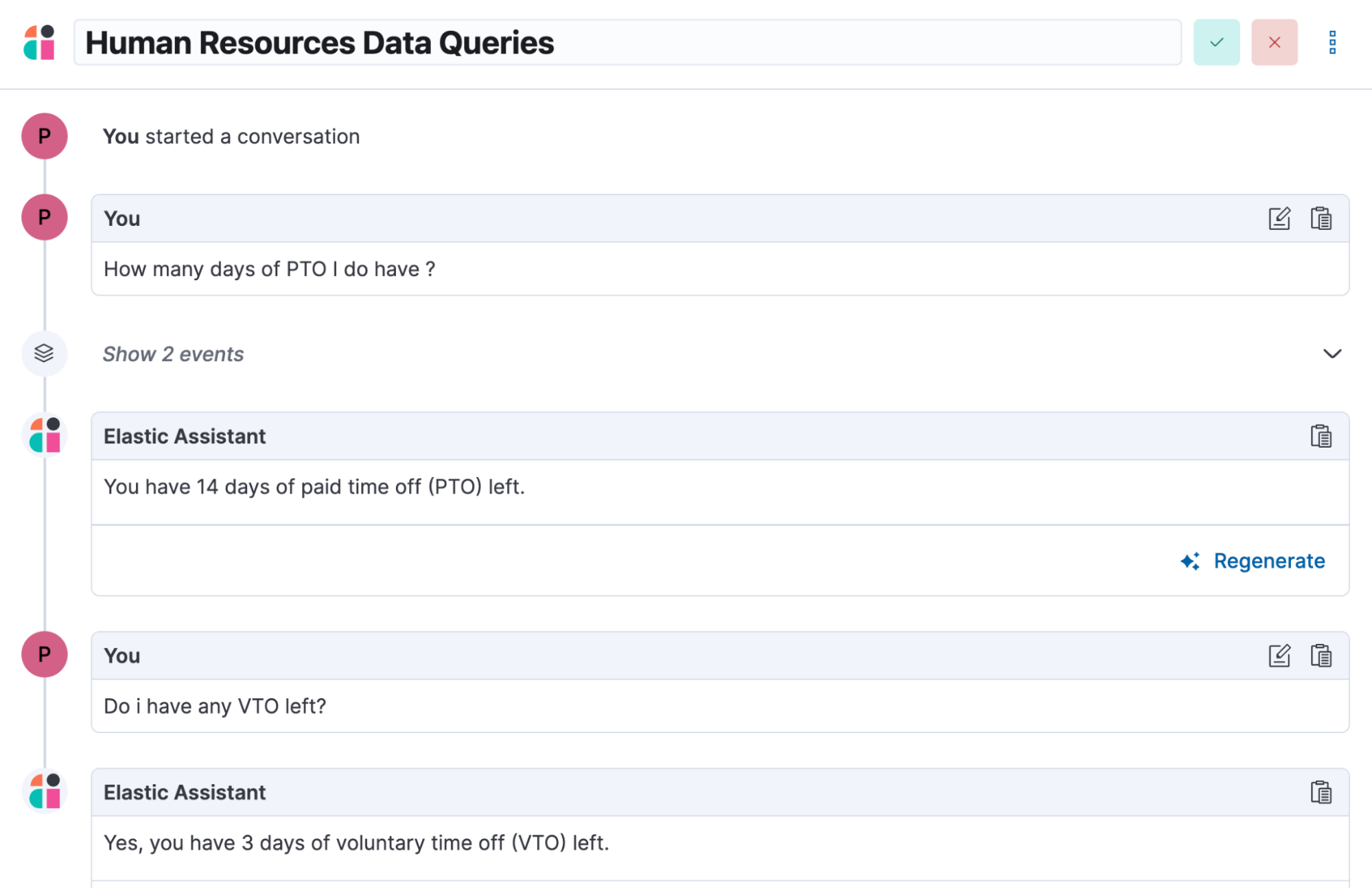
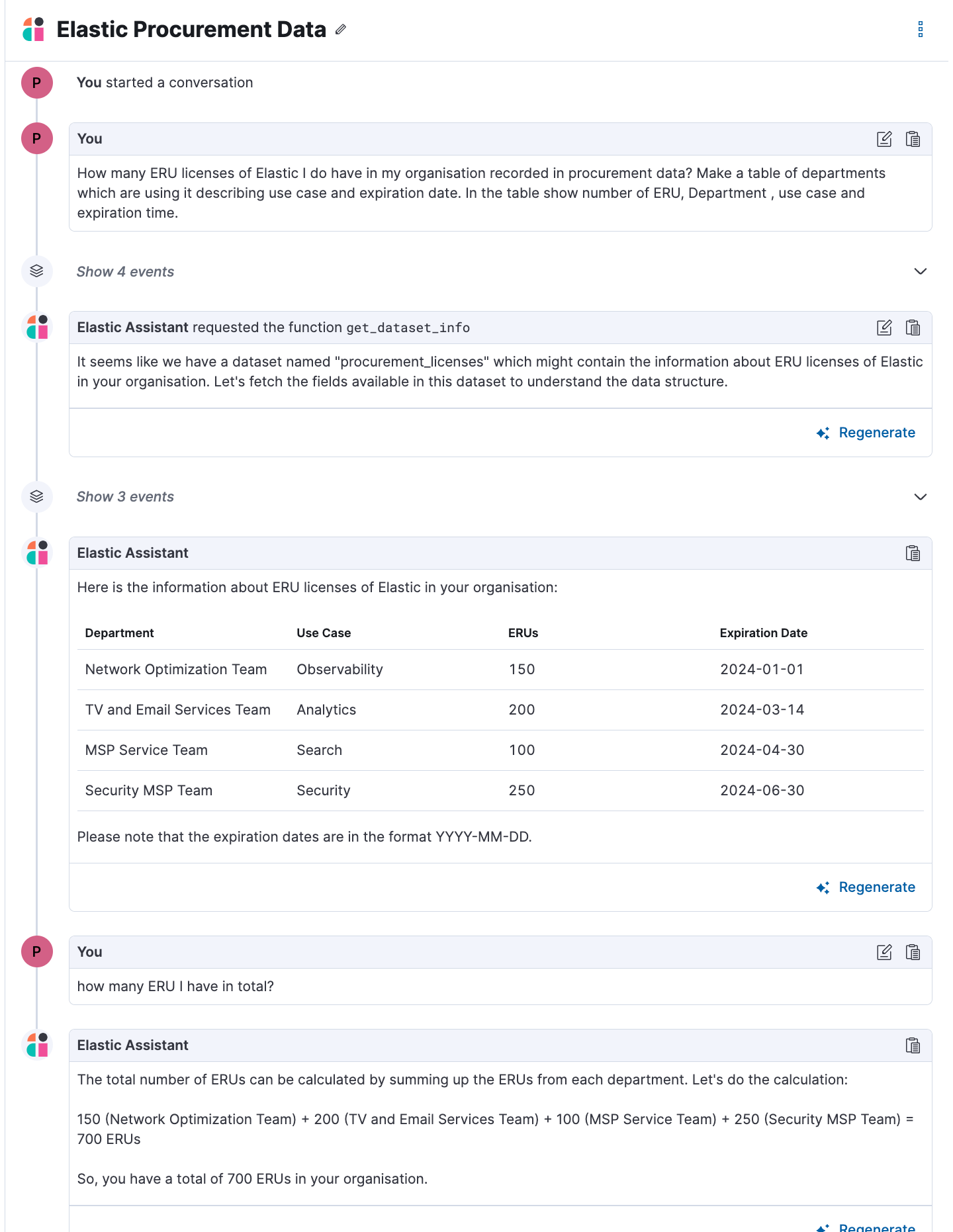

Note: Please bear in mind that these examples are just a starting point; the possibilities are truly boundless. The key is to diligently store pertinent data within the Elastic Stack. Additionally, it's crucial to supplement your Knowledge Base with clear instructions on querying this data. By doing so, you empower users to efficiently extract insights and answers they need. Essentially, with the right data and guidance in place, you're all set to unlock the full potential of this powerful tool.
The Elastic Stack and generative AI: A symbiotic relationship
The Elastic Stack’s advanced query languages and APIs, in combination with generative AI, establish a sophisticated environment for enhanced search and complex data analysis. This integration is key in automating tasks like root cause analysis, where the strengths of both the Elastic Stack and AI are harnessed for comprehensive solutions.
The inclusion of user-created knowledge bases, such as runbooks and processes, adds significant value to this ecosystem. The Elastic Stack's search capabilities provide quick access to this information, while generative AI’s natural language processing enables intuitive, user-friendly interactions. Users can effortlessly query in natural language, and the AI, supported by the Elastic Stack’s APIs, delves into advanced tasks like anomaly detection and predictive analysis using regression algorithms.
This functionality allows the AI to not only analyze complex data sets but also transform them into actionable intelligence. It adeptly identifies patterns and trends, offering proactive solutions and preemptive strategies. The system's ability to access and utilize user-generated content further enhances its effectiveness. As generative AI taps into these resources, it delivers context-specific answers and continuously evolves, thanks to user interactions and updates. This results in a robust and dynamic knowledge base.
Ultimately, the synergy between the Elastic Stack and generative AI transcends traditional data retrieval and analysis. It morphs into an intelligent assistant capable of providing customized solutions, marking a significant advancement toward more autonomous, efficient operational systems across various sectors.
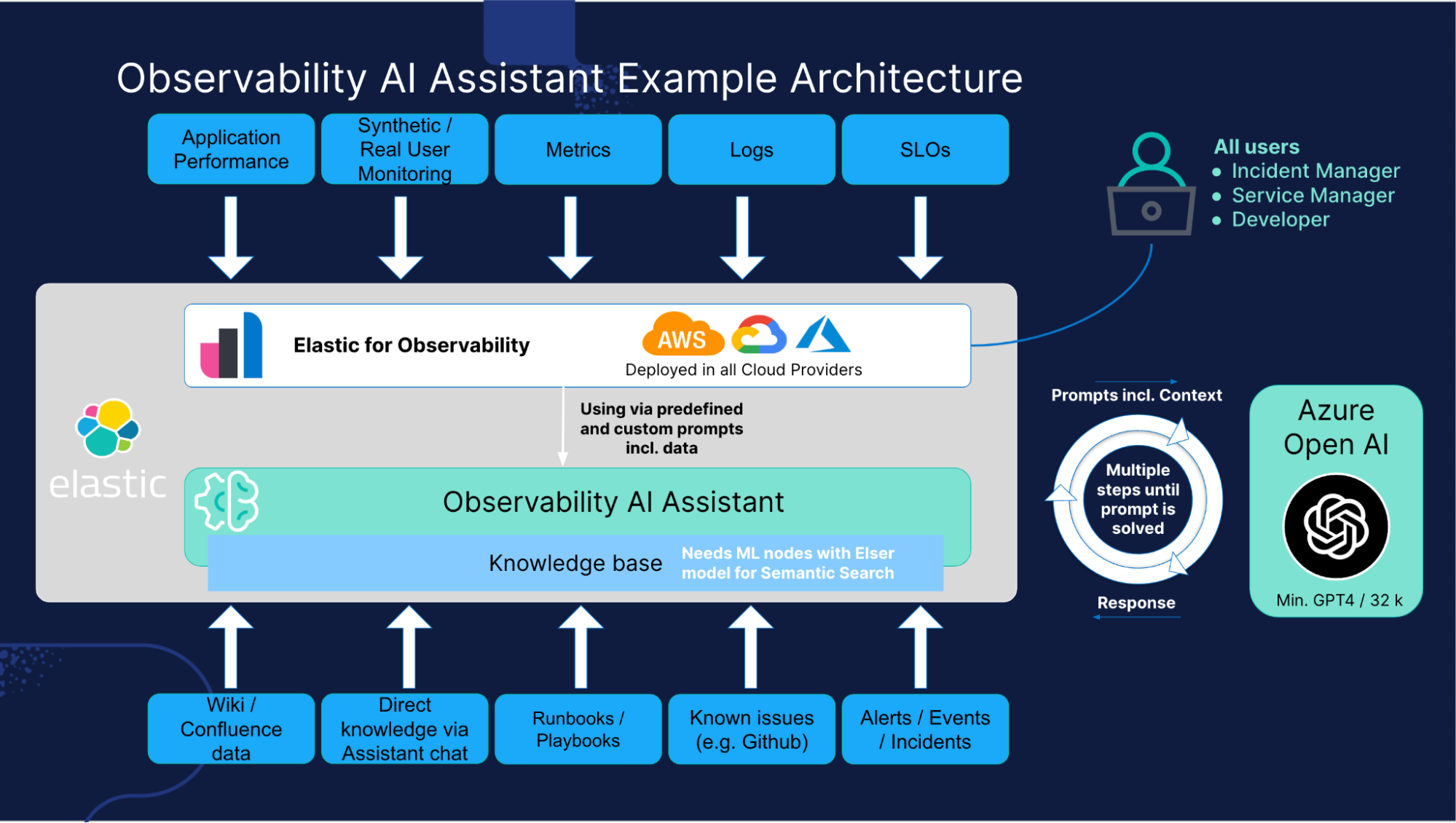
The release and timing of any features or functionality described in this post remain at Elastic's sole discretion. Any features or functionality not currently available may not be delivered on time or at all.
In this blog post, we may have used or referred to third party generative AI tools, which are owned and operated by their respective owners. Elastic does not have any control over the third party tools and we have no responsibility or liability for their content, operation or use, nor for any loss or damage that may arise from your use of such tools. Please exercise caution when using AI tools with personal, sensitive or confidential information. Any data you submit may be used for AI training or other purposes. There is no guarantee that information you provide will be kept secure or confidential. You should familiarize yourself with the privacy practices and terms of use of any generative AI tools prior to use.
Elastic, Elasticsearch, ESRE, Elasticsearch Relevance Engine and associated marks are trademarks, logos or registered trademarks of Elasticsearch N.V. in the United States and other countries. All other company and product names are trademarks, logos or registered trademarks of their respective owners.